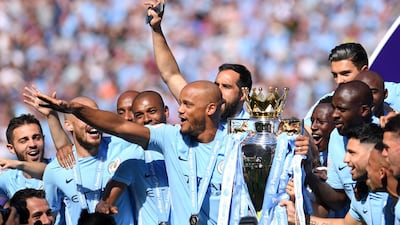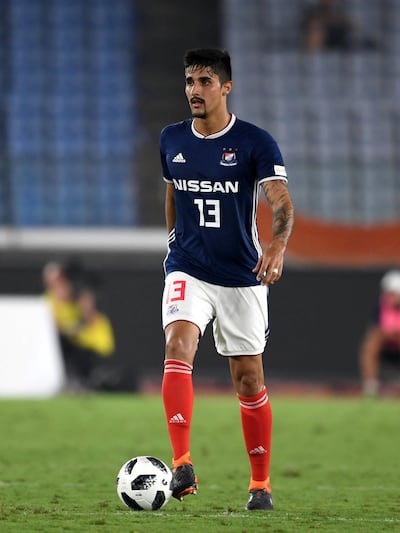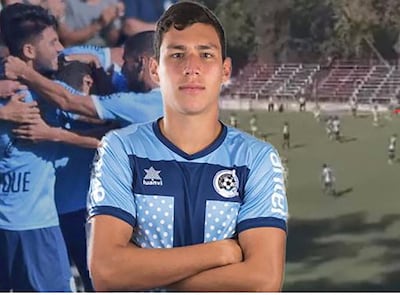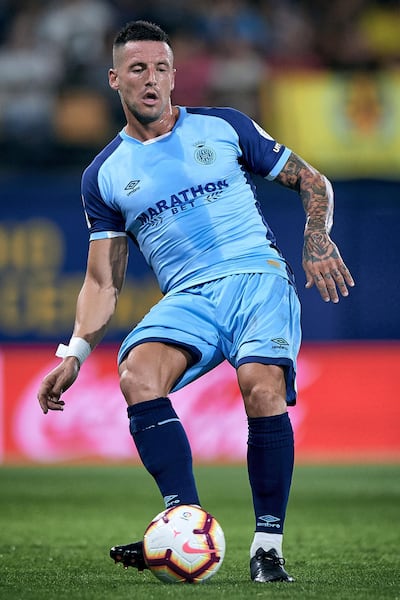While City Football Group was still in the process of securing the expansion licence for New York City in 2013, the emerging football group was already looking for new opportunities to bring additional clubs into its ecosystem.
To the surprise of many, the first place that CFG went after New York City was Melbourne, Australia, through the acquisition of Melbourne Heart FC and its rebranding as Melbourne City FC in 2014.
“Australia was opportunistic,” says CFG Chairman, Khaldoon Al Mubarak. “I mean, I don’t think we sat down and said, ‘You know what? We’ve looked around the world, and Australia is the first place we’re going to invest in.’ No, it wasn’t that. We had decided that the global idea made sense, and that the City Football Group concept needed to be tested, and Australia came up as an opportunity that was a relatively safe, manageable and risk-controlled testing ground for that new vision. It came up, we took the opportunity, and then it grew from there.”
Ferran Soriano says CFG first considered investing in China, but eventually settled on Australia as its initial launching pad into Asia.
“At the time, the way we were thinking about expanding was by looking at two elements,” he explains. “The first element was the size of the market and its potential for future growth, so we were looking at places where we thought that football and sports in general were going to grow, like China or India, and places where football was not the number one sport, but we believed it could grow to become the number one or number two sport, like the US and Australia.”
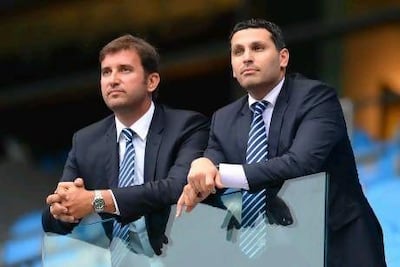
On the basis of this first element, CFG decided that China represented the greatest potential opportunity, and began exploring the concept of investing in a club in a major Chinese city.
“However, the other factor that we had to consider was stability,” says Soriano, “so places where the league was solid, and that was one of the things that eventually led us to Australia. Australia was a stable environment. At that time, the Chinese league was not as well-organised and professionalised as it is now. So, we went for Australia, which at that time was more similar to New York. There was an opportunity in Sydney, but ultimately we found an opportunity in Melbourne that we liked very much.”
Melbourne Heart was established in 2009 as the second A-League team to set up shop in Australia’s second largest city. It entered the competition a year later in 2010, and made the finals just once in its first three seasons, before its founders began quietly making plans to sell the Club.
The opportunity to acquire Melbourne Heart was brought to CFG in late 2013 by Bart Campbell, the Chairman of National Rugby League side, the Melbourne Storm, which shared a stadium with the four-year-old football club, who had become aware that its owners were looking to exit.
“I’d heard that City Football Group were looking at an A-League club in Sydney,” says Campbell, “and I had already seen what they had done in New York. So, I met up with Simon [Pearce], and I said, ‘I know you’re focusing your efforts on a team in Sydney, but just for the record, there is an opportunity with a club in Melbourne, and we would be interested in partnering with you to provide some in-market support here,’ and that didn’t sound entirely crazy to him.”
Pearce confirmed CFG’s interest in the opportunity, but thought having Campbell front the deal gave the two parties a much better chance of getting the Club for a reasonable price. ADUG and its officials knew from experience that the mere mention of ‘Manchester City’ or ‘Abu Dhabi’ tended to give wide-eyed sellers unreasonable expectations for the value of their assets.
“I told Bart that the problem for me is that every time we get close to something, somebody is going to put an ‘Abu Dhabi premium’ on it, and we are not going to overpay,” explains Pearce. “I said, ‘We are not anybody’s fools. So, if you are prepared to front that for me, then let’s talk about you and your partners coming in as minority shareholders.’”
_______________
Read more:
Manchester City celebrate 10-year anniversary with victory over Newcastle
Vincent Kompany interview: Abu Dhabi takeover transformed Manchester City overnight
_______________
Campbell agreed, and negotiations proceeded on the basis that the owners of the Melbourne Storm would own 80 per cent of Melbourne Heart, and the remaining 20 per cent would be held by an unnamed Premier League club. It was only when the deal was almost done that Campbell revealed to the sellers that the 80/20 split would in fact be the other way around. CFG would own the lion’s share of the Club, and the Melbourne Storm ownership would be the minority shareholder.
Melbourne Heart was duly sold to CFG and its minor partners for AU$11.25m on January 23, 2014. Later that day, Melbourne Heart CEO, Scott Munn, received an ominous phone call from CFG director, Simon Pearce, asking him to gather his senior leadership team and bring them to the Crown Hotel in Melbourne for an urgent meeting with the new ownership.
“Simon said to me ‘Look, can you get your Head of Commercial, Head of Football, Head of Finance and yourself, and come and meet us at the Crown in the city?’ So, I went and got them all, and I remember Brad Rowse [the Club’s Head of Commercial] in particular was like, ‘This is it. They are going to sack us all today,’” recalls Munn.
Rowse doesn’t deny he was bracing for bad news.
“My thoughts were that, normally when you get a big corporate takeover, they would get rid of the executive team and put their own people in,” says Rowse. “So, we were having a bit of a talk in jest, but also with a bit of concern as well. We were thinking, ‘Well, what are you going to do next?’”
“Clearly, we’re nervous,” admits Munn, laughing about the incident four years later, “and Brad’s like, ‘Let’s stick together, and if they try to ask us to come up individually, we’ll all go as one!’”
“We’d also been told two o’clock or something,” adds Rowse, “and then it drifted out to almost four in the afternoon, and we were still sitting there in this hotel lobby, and the longer it went on, the more bleak it looked for us.”
“Eventually they called us up,” says Munn, “and it was Ferran [Soriano], Simon [Pearce] and Brian [Marwood]. Simon and Ferran spoke, and then Simon said, ‘I am going to ask you one question, and I want each of you to answer it.’”
“He said, ‘I want you to tell me what keeps you awake at night,’ and he started with the first person. It was Paul Jeffrey [Head of Finance], and Paul said ‘Cash flow. We have no cash flow, we have to scrimp and save to find the money to pay the wages on the 15th of every month.’”
“Simon said, ‘No problem. We have your bank details and tomorrow morning there will be enough cash in the bank for the next 12 months.’”
“Paul says, ‘Okay, fantastic. I’ll sleep well tonight.’”
“Then he went to Brad and asked the same question, and Brad said ‘We’ve had [Australia’s oldest bank] Westpac as our major sponsor for five years and they have just told us they are not going to renew front-of-shirt next year. Simon said, ‘No problem. We think Etihad wants to take front-of-shirt next year,’ and Brad was like, ‘Okay, great.’”
“He then went to John Didulica [General Manager, Football], and John said, ‘We finished second-to-last [in 2012-13], and we’re at the bottom of the table now.’ Simon said, ‘Well, we’ve just won the Premier League, and Brian is going to fix your football department.’ John said, ‘That’s fine with me.’”
“Then they asked me,” recalls Munn, “and I said, ‘Nothing, because you’ve just fixed everything that kept me awake at night.’”
_______________
Read more:
Joleon Lescott interview: Reflecting on Manchester City's 2012 Premier League title triumph
Brian Marwood interview: Next decade is all about global expansion for Manchester City
A decade at Manchester City: 10 key moments since the Sheikh Mansour takeover
_______________
Munn, who remains CEO of Melbourne City FC today, says the light-hearted exchange was an important moment.
“It was a bit of an icebreaker,” he says, “because at that point we started thinking, ‘Okay, these guys seem like good people.’ I remember both Brian and Simon spoke about wanting the Club to be successful. They said things like, ‘We want to invest. We want to give you an opportunity to succeed. We are not here to come in and judge people by what’s happened in the past. We are not here to come in and sack people. We are just going to understand the business. We are going to understand the people. Then we’ll make it right, and some things we’ll get wrong, and then we’ll change it and start again.’”
The message was reassuring. However, Munn admits that he and his colleagues still harboured some doubts as they left that hotel suite high above Melbourne’s Yarra River.
“I remember leaving,” says Munn, “and a few of us were joking and saying, ‘Sure, we’re just going to suck all your brains and get three months out of you, and then we’re going to sack you,’ and all that sort of stuff, but the reality is that those comments of ‘We just want to understand the business, and we want to understand the people, and the good people will be able to blossom, and those that can’t embrace it will move on,’ that is pretty much the reality of what’s happened.”
For some of CFG’s first boots on the ground, the modest atmosphere they found in Melbourne was eerily familiar.
“It felt like a much smaller-scale Manchester City around the time ADUG had taken it over,” says Marwood, who audited Melbourne Heart’s football department immediately after the takeover. “It was a club that was obviously operating on a very small budget. Basically, the CEO, Scott [Munn], and John Didulica, the Football Director, were doing ten roles each. It was great because it had a real community spirit and no kind of hierarchy with stuff. No matter who you were, everybody just kind of mucked in and got stuff done. One minute John was doing the contracts for the players, and the next minute he’s serving them lunches or getting the kit washed. It was a big removal from where we’d got to in Manchester by then.”
“It was obviously not an ideal office environment,” recalls CFG’s Tom Glick, who visited the Club shortly after the acquisition to evaluate its commercial capabilities. “It was far from the stadium, which was not traditional, and it was a small staff that was doing a lot and wearing a lot of hats. I related to it though, especially with some of the things I had done and places I had been earlier in my career, coming up through Minor League Baseball. You could sense that they were a group of people that was surviving, but at the same time there was this real commercial competency. One of the things I remember is their sponsorship team was the best in the League. They were selling more than anybody else, yet had this team that was finishing eighth, ninth, tenth in the table.”
_______________
Read more:
The 10 most important Manchester City signings under Abu Dhabi ownership - in pictures
_______________
Don Dransfield, who was redeployed from New York to Melbourne immediately after the acquisition to lead the development of a business plan for CFG’s newest club, had a similar experience when he attended his first A-League game in the small country town of Albury within days of his arrival.
“I’d received all the financials from this guy called ‘P.J.’ [Paul Jeffrey] and they were brilliant,” recalls Dransfield. “They were really professionally done. I hadn’t met him yet though, so when I got to the game, Scott said he would introduce me to him. We then ran along and went to the merchandise store, and ‘P.J.’ was there selling shirts. This guy was the financial controller for the Club. He’d done all of the due diligence stuff for the sale to a really professional standard, but he was also the guy selling shirts and taking cash on match day. I couldn’t believe that.”
That combination of competency and goodwill was one of the main reasons why CFG ultimately decided to integrate the Melbourne Heart staff into the Group rather than to outsource many its non-football operations to the Melbourne Storm [the National Rugby League club owned by CFG’s minority partner in the transaction], as had been originally considered. According to Soriano, the learnings from that integration process continue to deliver benefits to the Group today.
“It was important,” says Soriano, “because the value of our investment in Australia was obviously the team itself, but also the fact that it enabled us to create the Group mechanism that we needed. As a result, I think today we have a system where we can add a new club, I am not going to say effortlessly, but with a reasonable amount of effort, and it is not a drama. This is because we now have the systems on the football side, on the commercial side, and on the IT side, that allow us to do this.”
Dransfield agrees that the significance of the Melbourne acquisition has always been greater than the sum of its price.
“Melbourne didn’t complete the story, but it at least allowed us to start to tell the story,” he says, of Melbourne’s strategic importance to CFG at the time. “Before then, we just had these two anchor assets. This big Premier League club [Manchester City FC], and then this big and obviously very expensive asset in a prime city in the US [New York City FC]. What Melbourne allowed us to do in a relatively inexpensive way was to complete that part of the arc, but in a salary-capped environment where you didn’t have some of the issues around match fixing, corruption and other allegations that you had in a lot of the markets that we were looking at. It was a smart, low cost way of doing that.”
Melbourne Heart was renamed Melbourne City FC in June 2014 and CFG bought out its minority shareholder the following year to own 100 per cent of the Club.
The next stop for the emerging CFG was ten hours flying time away in Yokohama, Japan. In July 2014, CFG announced an unusual partnership with Nissan that saw the Japanese automaker become a global sponsor of CFG, two months after CFG had bought a 20 per cent stake in the Nissan-owned J-League club, Yokohama F. Marinos.
“The Yokohama arrangement is probably a different model because that one was born off the back of our commercial deal with Nissan,” says Marwood. “Nissan owned Yokohama Marinos, and they were very open with us saying, ‘Listen, we make cars, but we’ve got this football club that is part of our DNA, because it’s right in the heart of Yokohama, and we’d like you to help us with its football operations.’”
“The club was struggling,” says Omar Berrada, now Manchester City’s Chief Operating Officer. “It was struggling financially and it was struggling on the pitch. That’s when the idea came up of, ‘Okay, if we came in and helped you make the club more successful, would you come in as a global sponsor?’”
That double coincidence of wants remains at the heart of the CFG-Nissan partnership today.
“So, as part of the relationship,” explains Berrada, “we bought a stake [in Yokohama F. Marinos], and committed to helping them on two fronts. First, on the commercial side, by leveraging our global sales network to help bring them sponsors, and second, helping them on the football front.”
Three years after Yokohama, the next two clubs to join CFG were Uruguay’s Club Atlético Torque [100 per cent owned by CFG under an agreement signed in April 2017] and Spain’s Girona FC [44.3 per cent owned by CFG since August 2017].
The investment in Girona FC is already paying dividends, with CFG officials estimating that the Club has quadrupled in value since securing promotion from the Spanish Second Division and staying up after its first season in La Liga in 2017-18. The connection to Girona FC has been beneficial in other ways, with Manchester City's Pablo Maffeo sold to Stuttgart FC in May 2018 for £8.8m with a 25 per cent sell-on clause, after playing the last two seasons on loan at the Spanish club.
The rationale behind CFG’s acquisition of Club Atlético Torque is at least partly geographical.
“Torque gives us a foothold into South America,” says Al Mubarak. “It’s in Uruguay, which has historically been one of the most successful places in terms of producing young talent. It’s a good legal jurisdiction and a good economic place to invest, and CFG is uniquely equipped to help the Club succeed and grow.”
“Uruguay is a very small country,” says Soriano. “Only 3.5 million people. But, they are two-time winners of the World Cup. The amount of good players to have come from there is spectacular. In the case of Torque, this was a very small team. We bought the team, it got promoted to the first division, and we hope that we can develop some very good talent there.”
Early signs are positive, with 19-year-old Argentine midfielder Valentin Castellanos moving to New York City FC on loan [with an option to purchase] from Club Atlético Torque in July 2018. Castellanos is not the first, and is unlikely to be the last, promising young player to move from one CFG club to another in order to take the next step in their career.
In early 2014, in a deal negotiated just days before CFG's acquisition of Melbourne City and completed after it, the Club signed a talented Australian midfielder by the name of Aaron Mooy, on a free transfer from another A-League club. In 2016, after two strong seasons at Melbourne City, Mooy was sold to sister club, Manchester City, who immediately loaned him out to Huddersfield Town. There, Mooy was instrumental in the Terriers gaining promotion from the EFL Championship to the Premier League, taking out the Club's Player of the Season award in 2016-17. In June 2017, Huddersfield Town signed Mooy permanently from Manchester City for a fee of £8m [potentially rising to £10m].
The Mooy fee [AU$14-18m] was worth more than the amount that CFG paid for Melbourne City FC [AU$11.25m] in 2014.
Killing The Game: the inside story behind the transformation of Manchester City and the creation of City Football Group is available to buy on Amazon
